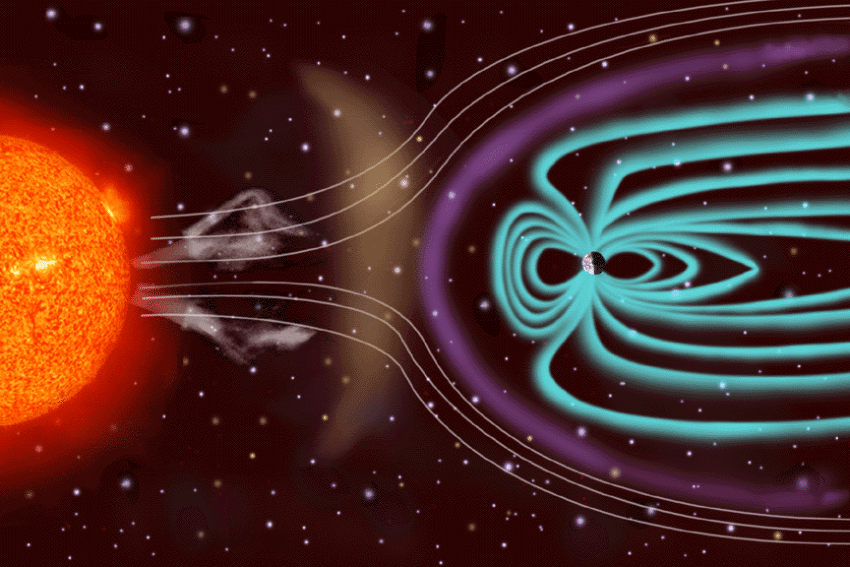Earth is sort of overdue to see its magnetic field pull a 180 and reverse on itself. Definitely, many people are expecting this to happen any day now. But according to a new report, the magnetic field might be feeling a bit weak, but it is not going to do a flip soon.
A group of European researchers compared the current state of Earth’s magnetic field with its inconsistent geological history and discovered that the field’s current patterns of disturbance do not resemble the same patterns that came before previously recorded pole reversals. However, the current field looks very similar to situations around 49,000 years and 46,000 years ago – when there was some significant waning in strength, but no complete flip. Regardless, researchers are still left with a pretty unpredictable picture of what is next for the magnetic field.
The magnetic field is basically the reason why Earth is the right temperature for life. Generated by the slow chugging of the planet’s liquid core, it protects the world from cosmic radiation and powerful solar storms that would otherwise eradicate us with charged particles from our nearest star, the sun. “If these charged particles ‘collide’ with the atmosphere, they can enhance loss of some atmospheric constituents, such as water,” explained one of the top researchers of this report.
In other words, if we did not have the magnetic field, Earth would probably look like a certain red wasteland that is fairly nearby, and it is doubtful any of us would have had the chance to exist. Furthermore, this protective effect deflects charged solar wind particles from causing malfunctions in orbiting satellites which are critical to GPS navigation, meteorology, communications, and more.
The current magnetic north and magnetic south, sitting close to their respective poles, have been at their posts for around 780,000 years, after the previous reversal. Since direct observations began in the 19th century, researchers have spotted that the field’s strength has weakened by about 5 percent every 100 years, for possibly as long as the past two millennia.
Of high interest is something called the South Atlantic Anomaly, an inexplicably weak area of the field spanning over the planet from Chile to Zimbabwe, where charged particles are unsatisfactorily deflected and can cause serious damage to satellites that pass through.
This loosening of the magnetic fields has often been thought of as a sign that the magnetic field is about to flip-flop. According to experts, a pole flip would not mean the disappearance of the pole, but it would mean a decrease in average strength by as much as 10 percent, before coming back to full strength. End of the world? Probably not. Walking into a world that sucks? Possibly!
The team decided to study in-depth several different periods of the magnetic field. Although the current South Atlantic Anomaly is odd, the magnetic field at 49,000 and 46,000 years ago had similar structures, without any intense event afterward.
Furthermore, the present field does not look anything like the state of the field from 41,000 and 34,000 years ago, respectively, when the magnetic field was tagged by “excursions,” or transient state of the magnetic field marked by intensity fluctuations and more anomalous structures. In many of those situations, the field quit acting so skittish after a few thousand years, and ended up returning to its previous strength.
All things considered; it is pretty unlikely we are going to see polar reversal. Even if the field all of a sudden degraded into a mottled form that would not even be enough to suggest possibilities, we would see a flip right around the corner.
